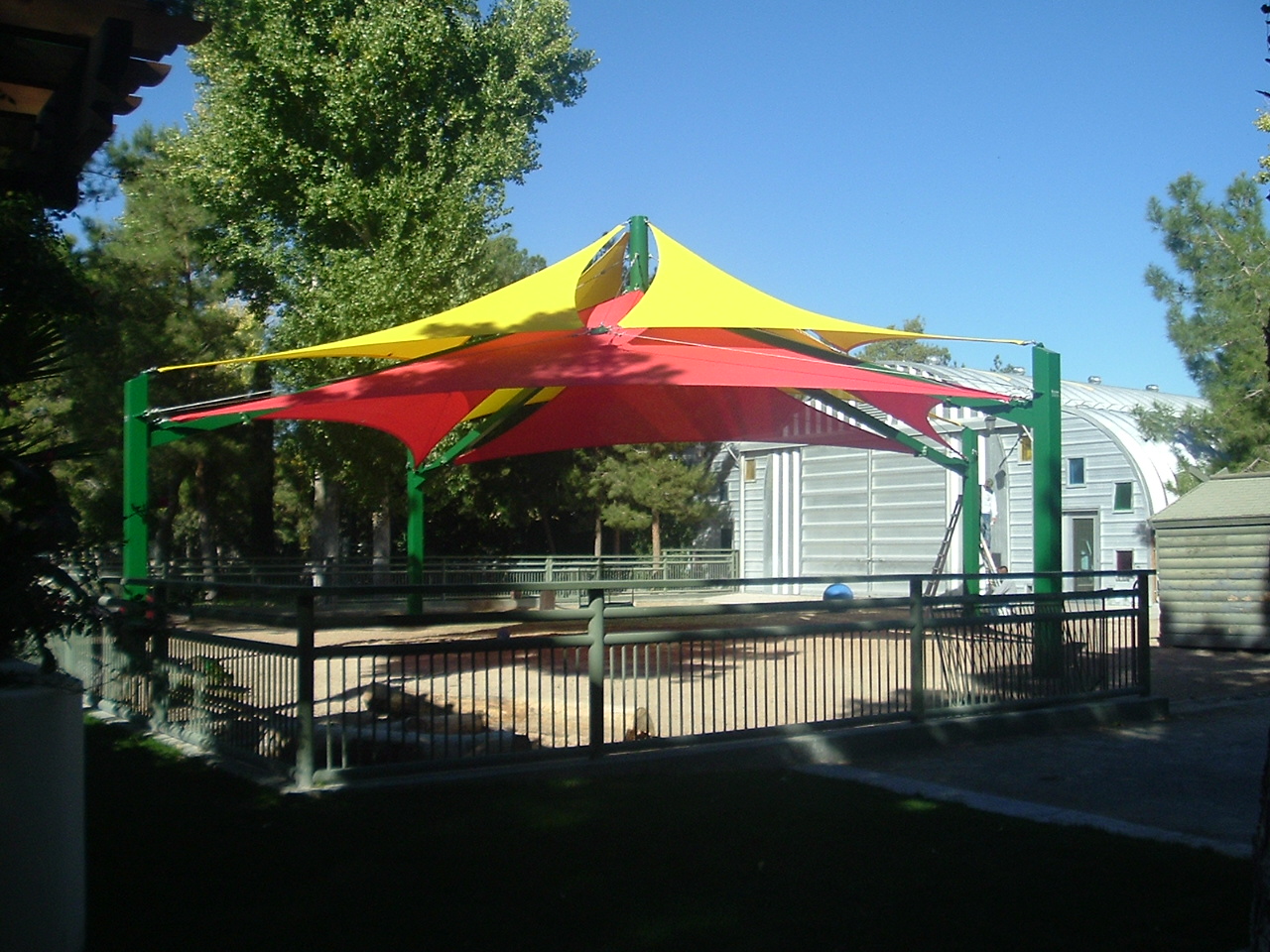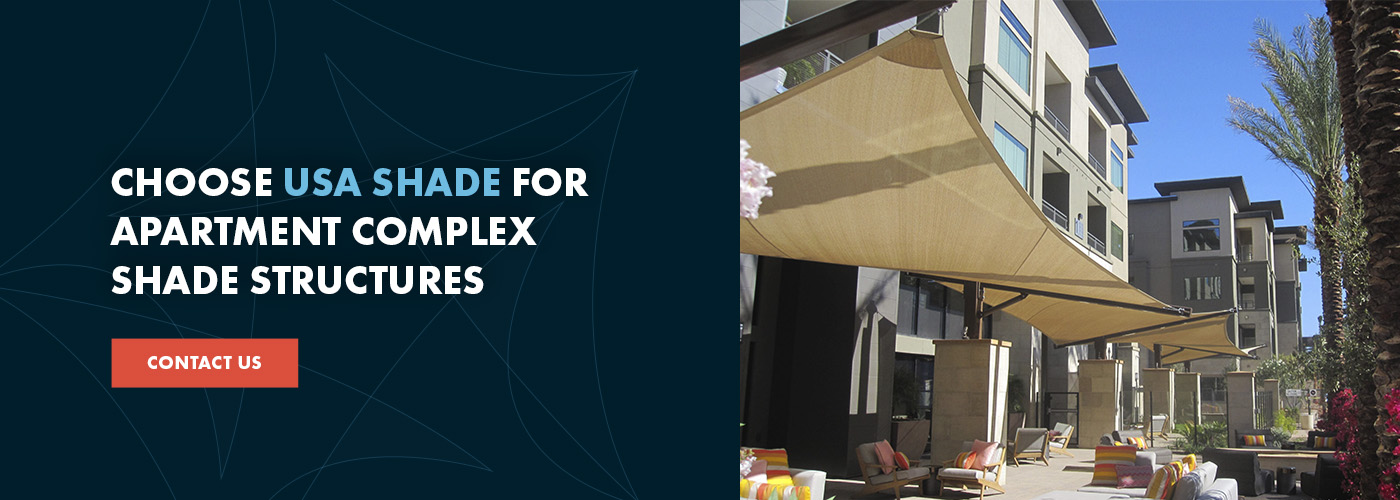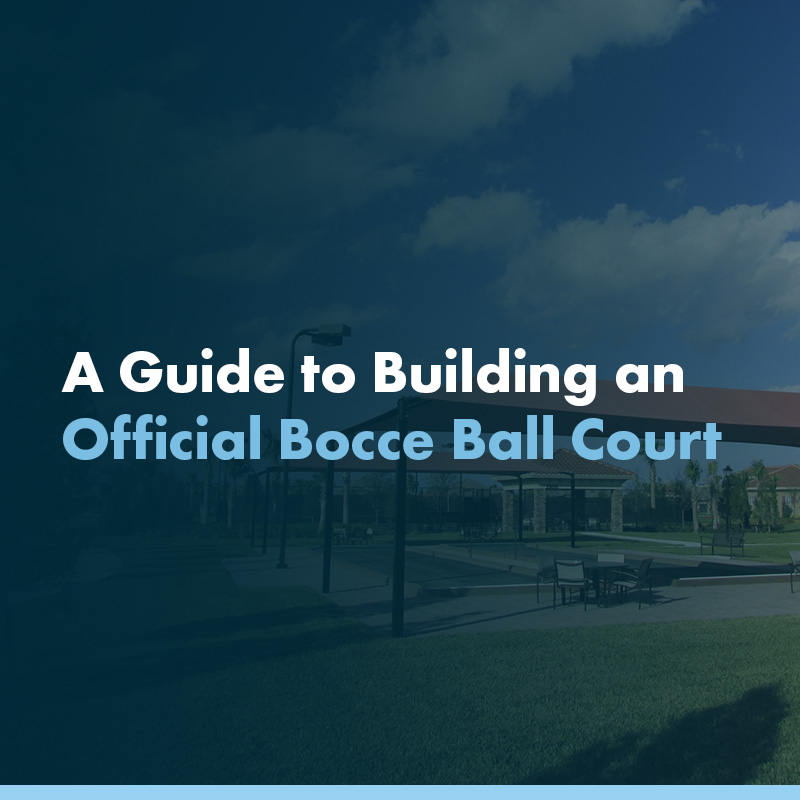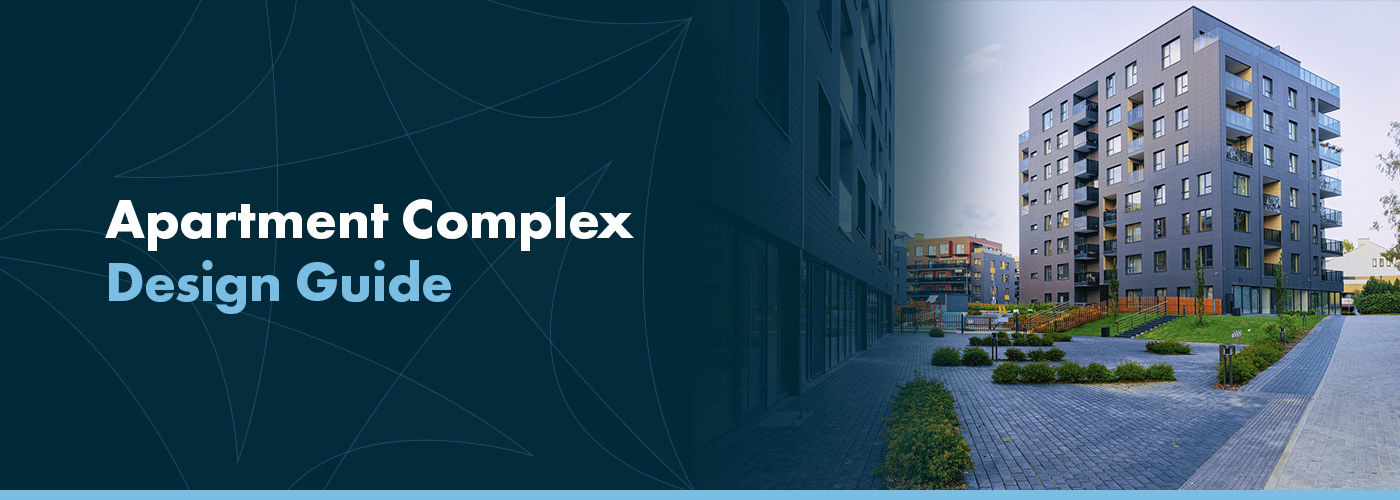
Developing a well-designed apartment complex can help you fill your occupancy and improve future residents’ quality of life. Good design can also increase property value and create a safer building for all. From selecting the perfect location and interior layout considerations to exterior amenities and safety features, designing a residential building is an intricate process that needs thoughtful consideration to ensure a successful project.
In this comprehensive guide, we’ll explore the many different aspects of apartment complex design to help you create a beautiful and functional space.
The Importance of Effective Design in Apartment Complexes
Good design has the power to create an environment people want to live in. While affordability is often an influential factor, many residents choose their apartments based on aesthetics, size, layout and the amount of natural light. As a result, an apartment complex’s design can play a key role in attracting tenants and determining the overall success of your development.
Effective residential design also focuses on functionality. Along with paying attention to important elements such as the building materials used for the exterior or small details such as bathroom finishings, developing a well-designed complex involves understanding future occupants’ lifestyles. Which amenities do they need to be comfortable? What types of facilities will enhance their quality of life? In addition to a place to call home, people value spaces where they feel healthy and productive and can both work and socialize.
Apartment complexes that include communal areas, green spaces and gyms typically lead to higher tenant interest and retention. Beyond helping apartment owners and building managers avoid costly expenses linked to tenant transition and vacancies, these amenities can encourage a sense of community among residents.
Apartment Building Pre-Design
Before starting to design an apartment complex, crucial factors must be considered.
1. Analyzing the Site
An apartment complex’s neighborhood can significantly impact its lucrativeness and marketability. Location is one of the main drivers of a property’s value, so choosing the correct site is a critical step in the design process.
When analyzing a potential site and its surroundings, pay attention to:
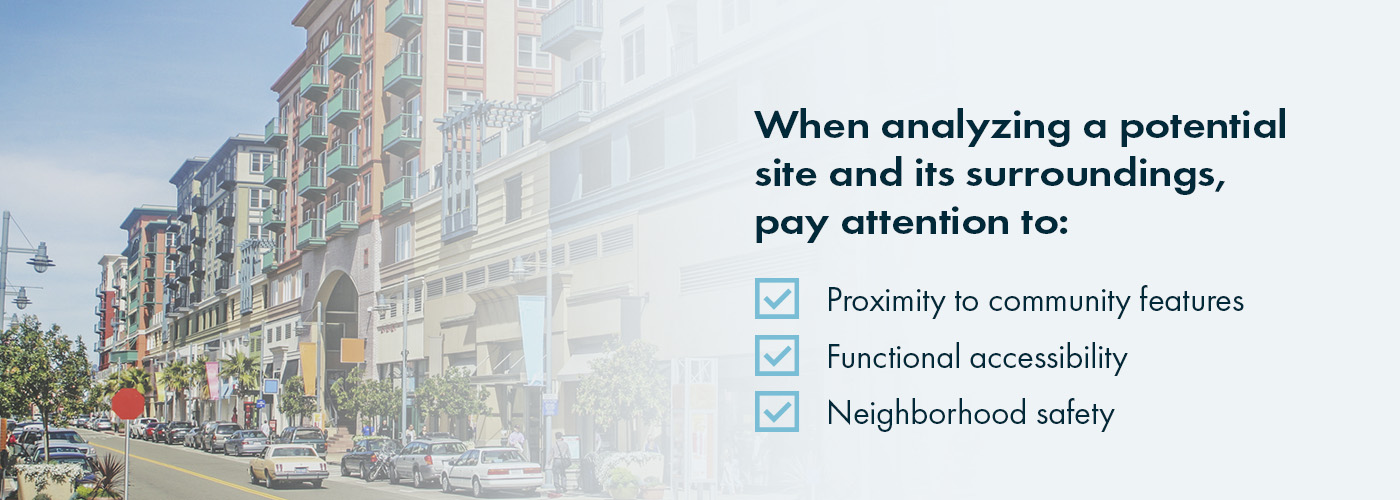
- Proximity to community features: Locations close to schools, parks, health care facilities, malls and public transportation can improve the lives of occupants by helping to ensure convenience, reduce commute times and cater to various life stages.
- Functional accessibility: Apartment complexes with easy access to well-connected routes, major highways and roads are often valued higher and seen as more desirable.
- Neighborhood safety: Low crime rates and an area generally considered safe are essential — a secure neighborhood can give residents peace of mind, enhance their overall well-being and allow them to feel comfortable in their space.
2. Understanding Zoning Laws, Building Codes and Safety
Confirm that your apartment complex design plans abide by zoning regulations, including applying for the relevant permits and adhering to land use and building height limitations. Your apartment complex will likely be located in an area with either residential or mixed-used zoning. The former allocates areas for housing, such as apartments, whereas the latter combines commercial and residential uses.
Zoning regulations can control construction specifics, such as restricting a building’s maximum height. In certain neighborhoods, constructing buildings above a certain height could be illegal, regardless of whether they comply with other laws.
Awareness of building codes is also necessary, as they aim to protect people from health and safety threats present in poorly constructed buildings. These laws set the guidelines for your apartment complex’s design and construction, including the requirements for structural systems, plumbing systems, natural gas systems, and heating, ventilation and air conditioning (HVAC).
Additionally, your building should incorporate safety and protection features to create a safe living experience for residents. Fundamental considerations include security measures like keypad entry and sufficient corridor lighting, fire safety measures such as fire sprinklers and extinguishers, and emergency planning for severe weather and natural disasters.
3. Assessing the Target Market
Thoroughly understanding your target market is key to developing an apartment complex with thoughtful design. To do so, analyze your project’s ideal tenant. For example, a residential space intended for families will differ from one designed for students. These considerations must be factored into the design process, as your clientele can influence everything from unit size, configuration and decor to which amenities you choose to include.
You can also choose to target more than one type of tenant. For example, you could develop a space that is both family-friendly and caters to those living alone. In this case, your complex’s design and layout would fulfill both target markets’ needs and wants.
Apartment Building Exterior Design
Once you’ve found the perfect location, understood the relevant zoning laws and building codes, gained any necessary permits, and identified your target market, you’re ready to begin with your apartment building’s exterior design.
1. Choosing Architectural Style and Materials
The exterior of your apartment complex is what potential occupants will see first and can create a lasting impression. Additionally, the architectural style lays the foundation for the building’s overall aesthetic.
When choosing which materials to use, balancing durability with aesthetics is best. In addition to contributing to a visually appealing facade, the type of materials used in your development project will need to allow for a solid foundation and sturdy framing.
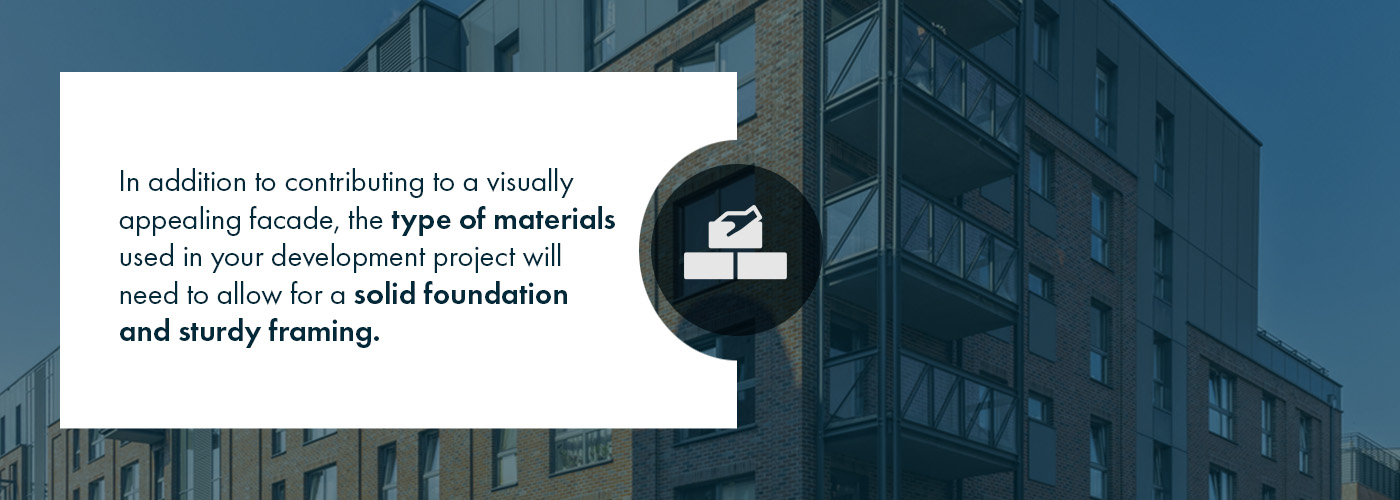
With more Americans becoming concerned about climate change, it is also important to select sustainable materials that reduce your building’s environmental impact. You might consider sustainable options like bamboo, hempcrete, recycled glass and steel, and reclaimed wood.
2. Adding Green Spaces
Greenery can make the building stand out in the concrete jungle typical of urban spaces. Along with increasing the property value of your apartment complex and making it more attractive to future occupants, green spaces may also improve the mental and physical health of those in the neighborhood.
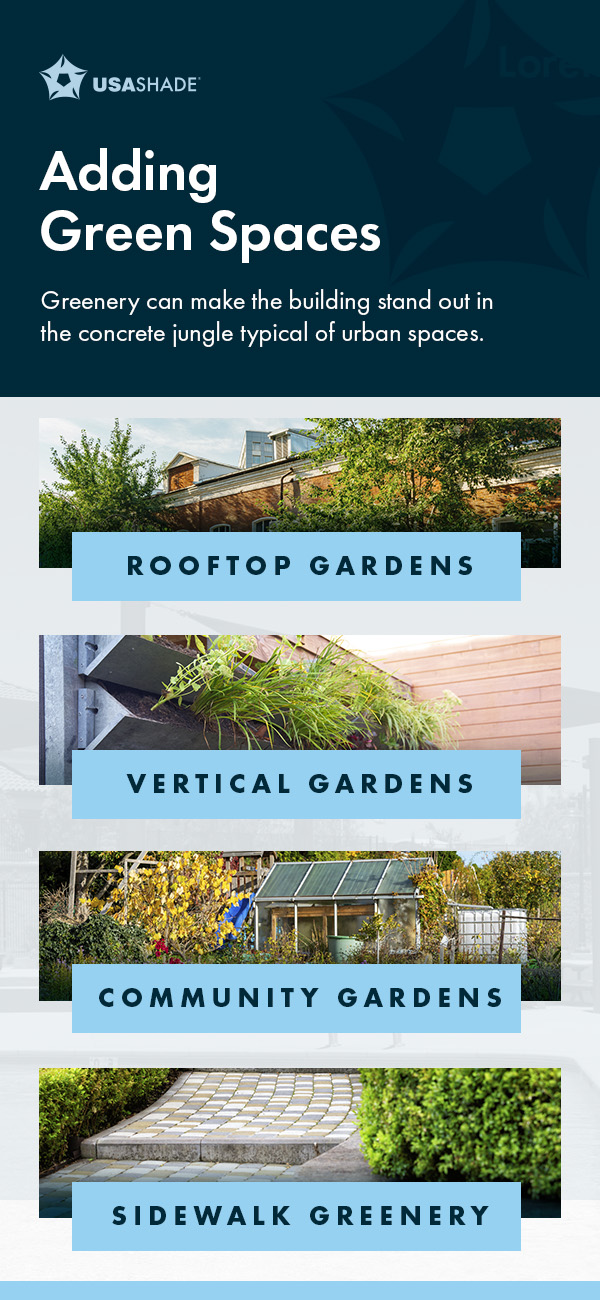
- Rooftop gardens: Placing plants and seating on your building’s rooftop is a clever use of space that offers residents extra amenities.
- Vertical gardens: In addition to making a statement, vertical gardens can absorb pollutants, release oxygen and promote biodiversity.
- Community gardens: More than providing occupants with an opportunity for a fun outdoor hobby, including a commercial garden in your building’s design can encourage eco-conscious habits.
- Sidewalk greenery: Creating green space near the sidewalk between your complex’s entrance and the street is a simple approach.
Choosing which plants to add is also a vital consideration — the right vegetation will suit your chosen architectural style and color scheme and be able to thrive in your location’s climate. Installing shade structures over green spaces can help protect residents from the sun while they enjoy these areas and enhance your complex’s exterior appearance even further.
3. Incorporating Exterior Design Trends
Looking to exterior design trends for inspiration is another way to boost your apartment complex’s overall curb appeal. Here are some ideas to incorporate into your building’s exterior:
- Indoor-outdoor living: A major trend is merging the outdoors and indoors, which can allow units and communal areas to feel much bigger. For example, you could use the same materials for your complex’s exterior and specific interior spaces to create the feeling that these areas are connected.
- Vintage features: Due to their nature, trends come and go. Recently, modern elements have been replaced by vintage ones. You can implement this by including wooden accents or wrought iron fences in your complex’s exterior design.
- Bolder colors: Although white and black are timeless options, bold color choices paired with warmer metal finishings, such as gold and brass, are becoming more popular. Rather than painting the entire exterior of your building orange or red, you might feel more comfortable adding a pop of color with accents such as doors or trims.
- Textural elements: Texture can give buildings a unique look and feel. For example, you could implement stone on your complex’s siding or pillars.
Apartment Building Interior Design
It’s important to note that all parts of the design process are connected and impact one another. For example, a building’s exterior design influences its floor plan and vice versa. As a result, it’s wise to work on the interior in tandem with the exterior.
1. Implementing Efficient Space Planning
Efficient space planning involves enhancing the functionality of the entire building, from its units to communal spaces. The goal is to develop an apartment complex where all areas have a logical flow that allows for easy movement and enhanced liveability. Additionally, a well-thought-out floor plan can help maximize space and create a more inviting residence.
Even if the units or communal areas are small, creative design can make them feel much bigger. For example, windows can give the illusion of a larger area. Open-plan layouts can also make an apartment feel much roomier. Open floor plans in shared spaces can encourage a sense of community by sparking social interaction.
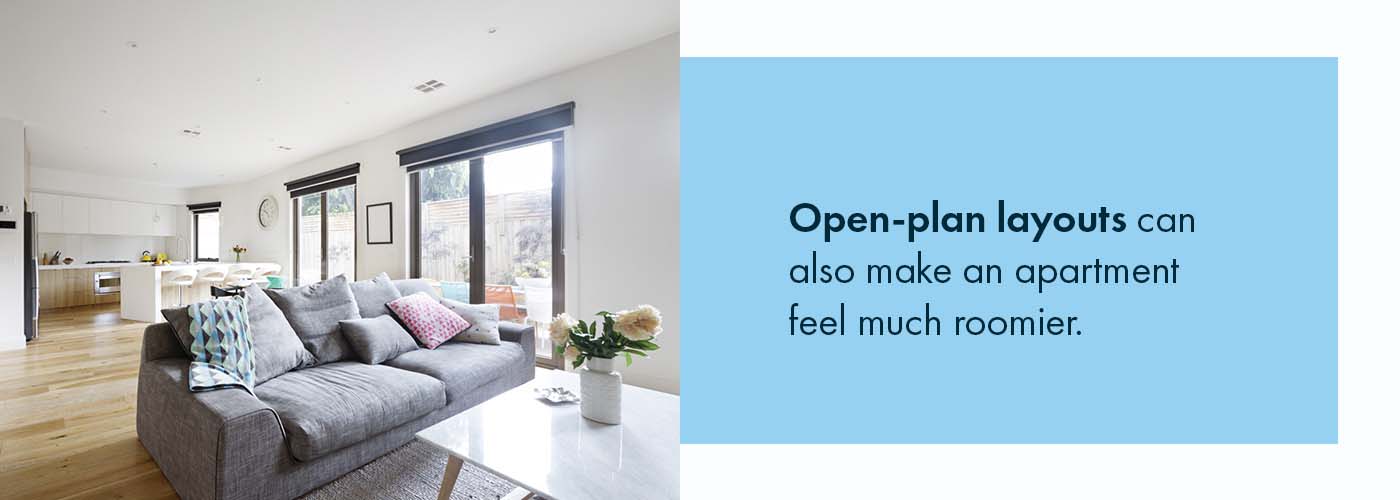
Depending on your target market, determine which types of units your apartment complex will include:
- Studios: These units have a single open space for the living room, kitchen and bedroom, making them ideal for young couples or individuals looking for a low-maintenance living environment.
- One bedroom: With a separate bedroom, these units are typically bigger than studio apartments. They’re also great for those seeking more privacy.
- Two bedrooms: These units usually have two bathrooms in addition to an extra bedroom. They’re a common choice among smaller families, those living with a roommate, or those who work from home and need an office.
- Three bedrooms: Due to their ample space, these units are popular with bigger families or those who want to accommodate guests. Three-bedroom apartments also typically feature multiple bathrooms, balconies or dens.
2. Designing for Functionality
In addition to optimizing functionality through the building’s layout and floor plan, you can ensure the space is comfortable through the smaller details of each unit. Functional interior design is all about creating an environment that makes life easier for occupants, from how furniture is arranged to which materials are used. There are four main principles of designing for functionality:
- Practicality: Practical units allow residents to perform their daily activities efficiently, with clearly defined areas for various uses or sufficient storage space.
- Durability: Another vital aspect of functionality is choosing hardy materials that are easy to clean and maintain.
- Ease of use: Finishing touches such as adjustable furniture or smart features can make living in a space much more convenient for occupants.
- Ergonomics: Creating ergonomic units involves considering residents’ comfort and well-being throughout the design process. This can range from selecting the right furniture to ensuring adequate lighting.

Here are some ideas you can implement in designing a functional interior:
- Use vertical spaces effectively with built-in floor-to-ceiling shelving, cabinets and wardrobes.
- Get creative with storage solutions, such as implementing under-bed storage.
- Opt for multifunctional furniture, like sofa beds or wall-mounted desks that fold away when not in use.
- Maximize natural light with large windows or skylights and implement floor plans that allow for illumination in key areas.
3. Integrating Interior Design Trends
While prioritizing function is essential, the interior aesthetics of your apartment complex are just as important. Tastefully designed units and communal spaces can improve occupants’ quality of life. When aesthetics and functionality meet, you can create the ideal living environment.
Staying up to date with interior trends can be an excellent source of inspiration, helping you come up with a fresh design concept for your development. Some current home design trends include:
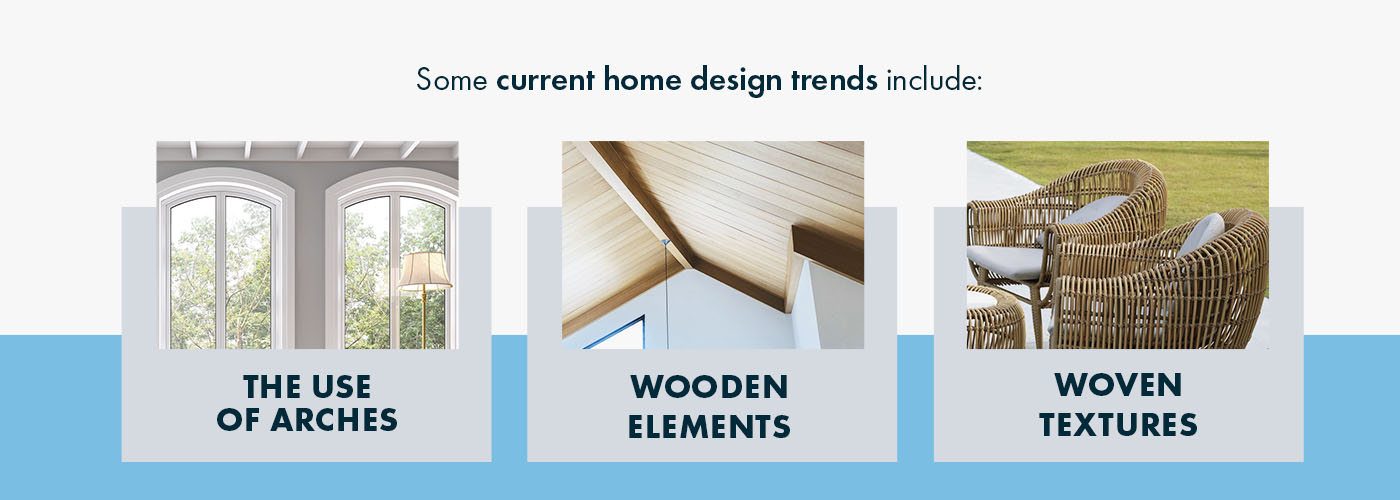
- The use of arches: Arches are a continuation of the organic modern style that has become popular in recent years. They contribute to a warm and welcoming atmosphere and can be incorporated into units’ or communal areas’ windows, doorways, and more.
- Wooden elements: While wood is a material that has stood the test of time, there has been a shift from cooler tones to warmer colors such as tan and brown. When coupled with earthy palettes and neutral tones, wooden elements such as ceiling beams or wall paneling can add a touch of warmth to your apartment complex’s interior.
- Woven textures: Details such as woven rattan or mesh can add visual interest to a space, especially when used alongside harsher materials such as tile. You can incorporate these textures into cabinet fronts, bathroom vanities and pieces of furniture.
If you implement any of these trends, ensure they align with your building’s architectural style for a coherent look and feel.
Community and Amenities Design
As mentioned, communal spaces can facilitate social interaction. Areas such as clubhouses, community lounges and co-working spaces can encourage residents to connect, which may foster a sense of belonging.
Amenities are essential to any apartment complex — the more you can offer, the better. In addition to opportunities for residents to socialize, entertain guests and work or study, you can provide facilities that promote health and well-being, such as fitness centers or yoga studios. Including restaurants or grocery stores can also make residents’ lives much easier.
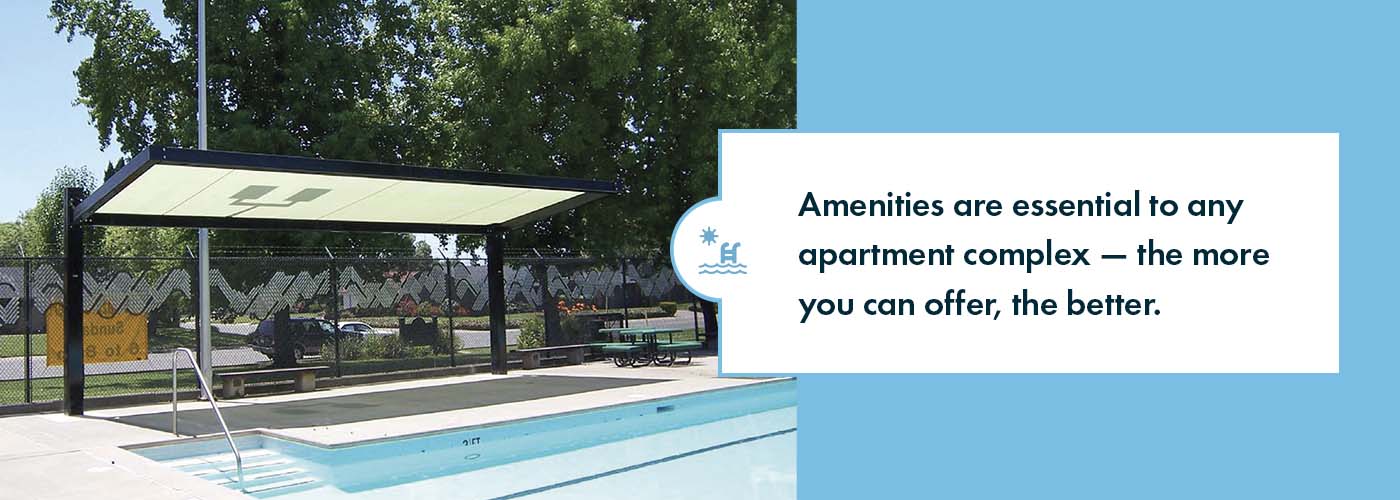
While many developers focus on indoor amenities, outdoor facilities are also essential. A well-designed apartment complex uses the outside surroundings to further enhance occupants’ living experience and connect them with nature. You can include communal spaces such as barbecuing areas, picnic spots and pools. With pet-friendly rentals on the rise in large cities, a dog park is also a great option.
Adding shaded structures to outdoor common areas can make these spaces more comfortable for residents, their pets and guests. By opting for a structure with waterproof fabric, residents can enjoy amenities outside, even during light showers.
Accessible and Inclusive Design
A design that is accessible and inclusive of all residents, such as children, older occupants and those with disabilities, is key. Newly constructed apartments must comply with the Americans with Disabilities Act (ADA). The ADA’s Standards for Accessible Design determine what is necessary for buildings to be easily accessed by people with disabilities.
Here are some measures you can take to develop an apartment complex design that is ADA-compliant:

- Review floor plans: Your floor plan needs to include accessible routes to and from units, entrances, communal areas, elevators and stairways. The bathrooms and kitchens in each apartment also need to be easily accessible.
- Analyze the exterior: In compliance with ADA, handicap-accessible parking spaces must be provided and big enough for vans with wheelchair lifts. You must also include ramps close to the main entrance with an appropriate incline.
- Address other requirements: Make a complete list of any requirements that still need to be fulfilled for your apartment complex to comply with ADA standards. For example, light switches, electrical outlets and thermostats may need to be at a specific height. Walls may also need to be reinforced to install grab bars.
Sustainable Design Considerations and Practices
Sustainability is becoming a key principle of modern design. Beyond developing an energy-efficient building, implementing sustainable design practices can allow you to build an apartment complex with minimal impact on the planet. Along with using eco-friendly materials, consider features such as solar energy, green roofs, energy-efficient solutions and rainwater harvesting systems.
- Energy efficiency: Heating and cooling are essential for your apartment complex but can use significant energy. Installing energy-efficient HVAC systems can be a solution. Adequate insulation can also reduce temperature control expenses. Plus, strategically placing shade structures near windows and doors can lower how much heat your building absorbs, reducing the need for air conditioning and helping to minimize energy consumption.
- Water conservation: Systems that harvest and reuse rainwater for nonpotable uses, such as irrigation, may lower the strain on local water resources. You can also opt for low-flow fixtures that conserve water, like toilets, faucets and showerheads.
- Renewable energy: To enhance sustainability, you can incorporate renewable energy sources, such as geothermal, wind or solar, into your building’s design. Installing solar panels is a great way to produce renewable energy.
Choose USA SHADE for Apartment Complex Shade Structures
USA SHADE is here to help you install long-lasting, durable, visually appealing shade structures at your apartment complex. As industry leaders in designing and manufacturing high-quality shade structures, we’ve collaborated with numerous developers, architects and landscape architects. We can customize your shade structure to any size, shape and style to suit your apartment complex.
USA SHADE is the only manufacturer certified by the International Accreditation Service, giving you peace of mind that the structures we build meet and exceed quality and structural integrity standards and help you meet relevant building codes.
Discover our product range, or contact us today to customize a design for your building!


